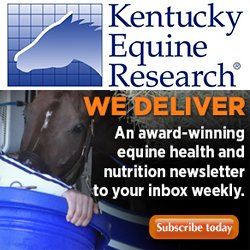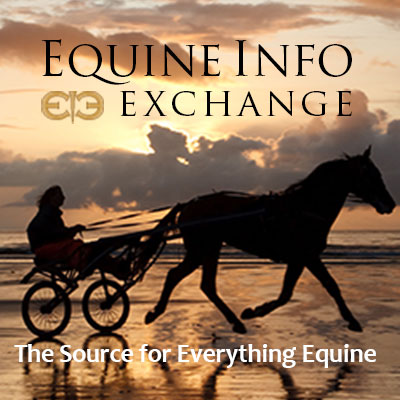Health & Education
We all want the best care possible for our horses. The Heath & Education section covers both Learning Institutions, Organizations as well as many sources for equine assistance including Veterinarians and Farriers.
For those who want a to formally study horses, the Education section includes College Riding, Equine Studies, and Veterinary Schools. Learn about the wide variety of horses in the Horse Breeds section. Supplements and Treatments Therapy are also included in the section.
Everyone can learn from Fine Art and there are some specialty Museums that might surprise you.
Horses as a therapy partner enrich the lives of the disabled. These facilities are listed in our Therapeutic Riding section. To help children and young adults build confidence and grow emotionally, please see the resources available on the Youth Outreach page.
Looking for a place to keep your horse? You can find it in the Horse Boarding section. Traveling? Find a Shipping company or Horse Sitting service if your horse is staying home!
Want to stay up to date with the latest training clinics or professional conferences? Take a look at our Calendar of Events for Health & Education for the dates and locations of upcoming events.
Do we need to add more? Please use the useful feedback link and let us know!
“32 and You: An Owner's Guide to Genetic Tests in Horses,” presented by Dr. Callum Donnelly, assistant professor in the Section of Theriogenology at #CornellVet, recorded February 20, 2024 via Zoom.
Dr. Callum Donnelly's talk focuses on horses' genetic health, discussing what kinds of genetics tests are offered, how to interpret genetic tests and what the future holds for genetics as a tool in your horse's health.
Donnelly received his veterinary degree from Charles Sturt University in Australia. He is a specialist in both reproductive medicine and internal medicine, and holds a Ph.D. in integrative pathobiology from the University of California-Davis. Donnelly’s thesis work focused on genomic and precision medicine as part of the Pioneer 100 Horse Health Project. He currently serves as a faculty member in the reproductive medicine section, and his clinical practice and research efforts are focused on maternal fetal health and medical genetics, helping to manage healthy and problem pregnancies, and providing advanced care for babies before they are born.
Read more: 32 and You: An Owner's Guide to Genetic Tests in Horses (55:02) - Cornell Equine Seminar
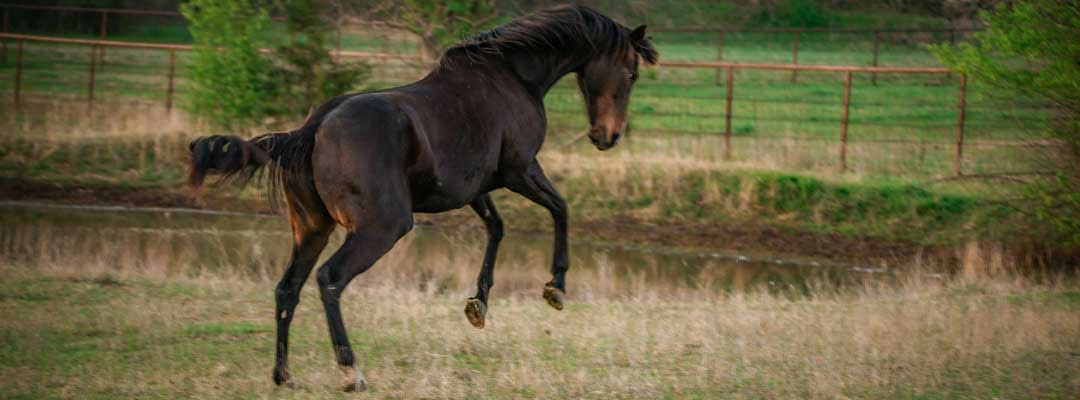
Is your horse bucking, rearing or generally misbehaving? Read up on the much-overlooked issue of pain in horses, as it relates to misbehavior.
She was asked to watch a horse move -- “Something just wasn’t right,” proclaimed the owner of a young Arabian. The mare was either “lazy” or bucking and rearing.
Robin Foster, Ph.D., certified equine behaviorist and university professor of 30 years, agreed that something was amiss. As she took note of the horse’s movement and behavior, she soon said to the owner, “I’m not a vet, but I have some ideas. You should get your vet out here to look at your horse. Something is happening in the hind end they may need to look at.” Through examination from her veterinarian, it was determined that this horse’s laziness was due to deformity in both stifles. The horse was experiencing such pain from carrying weight and moving forward that her veterinarians recommended bilateral surgery or otherwise, never ride the horse again.
Another horse, a 5-year-old off-track Thoroughbred mare, was also labeled as a “hot Thoroughbred” as she would often rear and bolt during training. When not asked to be on the bit, or when simply enjoying a light hack, her behavior was normal. The rider and trainers changed bits and switched disciplines from jumping to dressage, then to riding trails only. It was upon recommendation to involve a veterinarian that they learned the mare’s actions were not due to misbehavior. A series of X-rays revealed what the human eye could not see -- a C1 fracture of the vertebrae, nearest to the poll, causing her significant pain from bone-on-bone contact and arthritis.
“In my experience, horses almost never say ‘no.’ Horses can talk, and it is our job to learn how to speak their language and above all, to listen and be their advocate,” said Steve Allday, DVM, an equine lameness specialist with more than 35 years’ experience caring for an impressive list of equine athletes, including legendary racehorses A.P. Indy and Cigar.
Behavior vs. Pain
Dr. Foster shared how labeling horses a certain way such as “lazy” or “hot,” for example, isn’t uncommon. “When we label a horse’s behavior in a certain way, that becomes the truth about that horse,” Dr. Foster said. “And when the label becomes the truth, it’s hard to see past that and look for other explanations. What gets missed, though, can be signs of discomfort, pain and stress. The way horses express themselves when in pain and uncomfortable are seriously underrecognized.”
It is important to bring up any behavior-related issues with your veterinarian so they can look closely for any potential pain and discomfort during their regular exams. Of course, there are some signs of pain and discomfort that are more easily recognized, like limping, for instance. The milder pain states are more easily unrecognized, therefore resulting in horses commonly labeled as misbehaving, while they actually may be experiencing pain.
An Important Resource for Horse Owners
To help address the underrecognized signs of pain in horses, co-authoring Drs. Catherine Torcivia and Sue McDonnell, within the University of Pennsylvania School of Veterinary Medicine, published “Equine Discomfort Ethogram,” an incredibly detailed catalog of behaviors associated with equine physical discomfort. Drs. Torcivia and McDonnell outlined 73 specific discomfort behaviors and grouped them into eight categories: posture and weight-bearing; limb and body movements; head, neck, mouth, and lip movements; attention to area; ear and tail movements; overall demeanor; altered eating or drinking; and vocalizations/audible sounds. Interestingly, the report states, “Recognition of discomfort in a prey species is particularly challenging. Horses have evolved to show little evidence of discomfort or disability in the presence of predators, including humans.”
Their published work includes illustrations, written descriptions and even videos to demonstrate each pain-induced behavior. It is a treasure for horse owners and horse health providers, alike, and is deserving of a thorough read.
“Signs of discomfort and pain are often instead attributed to a horse’s personality. The identification of pain is an important gap commonly missed in equine welfare,” said Dr. Foster.
Managing Pain in Horses
You know your horse better than anyone else, often seeing them daily. Watch carefully for any new behaviors, and ask yourself whether these behaviors could instead be the result of pain. Work closely with your veterinarian for diagnosis and management of your horse’s pain and discomfort. There are a number of supplements for horses and prescription pain and inflammation medications available to help.
Help ensure your horse is living their healthiest, happiest and most comfortable life possible.
In rural America, individuals seeking mental health support often face barriers due to lack of access to quality resources. Often overshadowed by stigma, finding mental health help can be difficult, leaving individuals feeling unheard and alone. Yet amidst these challenges, hope emerges through partnerships with horses.
Read more: The Power of Horses | Supporting Mental Health in Rural Communities (7:58)
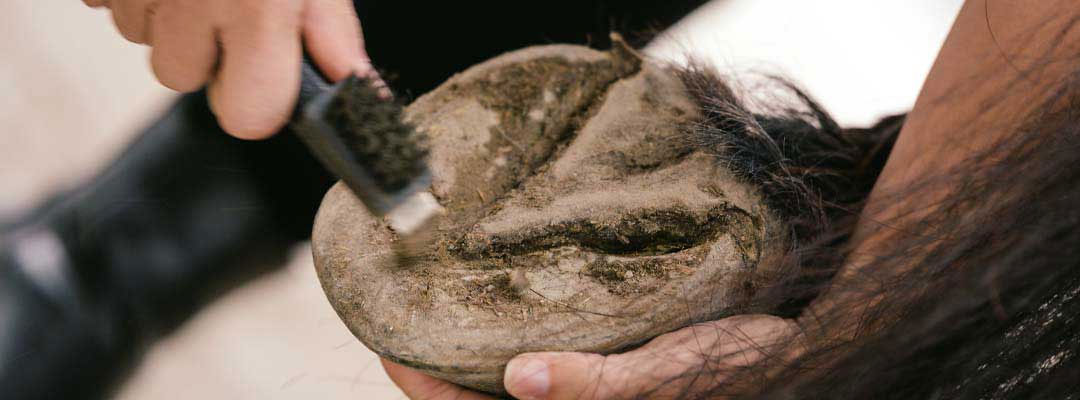
Learn more about the common condition, hoof thrush, and about thrush treatment for horses
Whew, do you smell that?
Once you smell thrush, it’s unlikely you will ever forget it.
Equine thrush infection is a hoof condition that many horse owners battle. It is described as an infection localized in the “frog” of the hoof, especially the grooves on the sides and middle of the frog called the sulci. The condition is characterized by a foul odor, a dark-colored discharge, soreness of the frog and deformation of the frog’s shape.
Thrush has been positively identified as being a bacterial infection of the soft tissue of the hoof, which is caused by Fusobacterium necrophorum. This anaerobic bacteria is a natural part of a healthy horse’s gut flora. It passes through their system and gets picked up on the hoof. While thrush is encouraged by dark, wet conditions, a case can occur in even the best of circumstances.
How do you identify thrush?
- Tenderness and/or pain in the foot
- Black, pus-like fluid
- Bleeding
- Strong, unpleasant odor
What causes thrush?
- Bacteria that thrive in wet conditions, especially environments contaminated with urine or manure
- Consistently wet conditions
- Infrequent hoof cleaning
How do you treat thrush?
- Move the horse to a clean and dry area.
- Ensure bedding and footing is as dry as possible.
- Pick the hooves out daily.
- Apply an antiseptic foot wash to clean the hooves. To determine frequency of application for daily use, please reference your thrush treatment’s product label, as treatment recommendations vary by product. Gently wipe it through the hoof to get into cracks and crevices.
- Hooflex Thrush Remedy is tough on bacteria and fungi because it is a broad-based antimicrobial. This means it will help battle the bacteria that causes thrush but also fungus that can follow. The product is “convenient to use and dried up my horse's thrush in two weeks,” said Jeannette, a horse owner in Pennsylvania. “It was recommended to me by my farrier.”
- Contact your farrier or veterinarian if the problem persists for longer than one week.
How long will it take to treat thrush?
Because of the nature of this infection, and the possibility of reinfection, it will take persistence to fully treat a case. Don’t give up after a few days -- it can take weeks. Though thrush can happen in just about any barn, it can be successfully managed when a comprehensive hoof care plan is implemented.
To help reduce risk for thrush and support excellent hoof care for your horse, schedule regular farrier visits every six to eight weeks. Also, pick your horses’ hooves often, daily if possible. Fight back bacteria and fungus with a proven thrush treatment solution, and make sure the paddocks and bedding are as dry as possible.
Looking to learn more about common hoof problems your horse may experience? Continue reading for details on types of horse hoof cracks, or, learn answers to common hoof care questions in this Q&A with a horse farrier.
About the author: This content was originally provided by Absorbine/W.F. Young, manufacturer of Hooflex Thrush Remedy, with additions included from Valley Vet Supply. Visit Valley Vet to learn more.
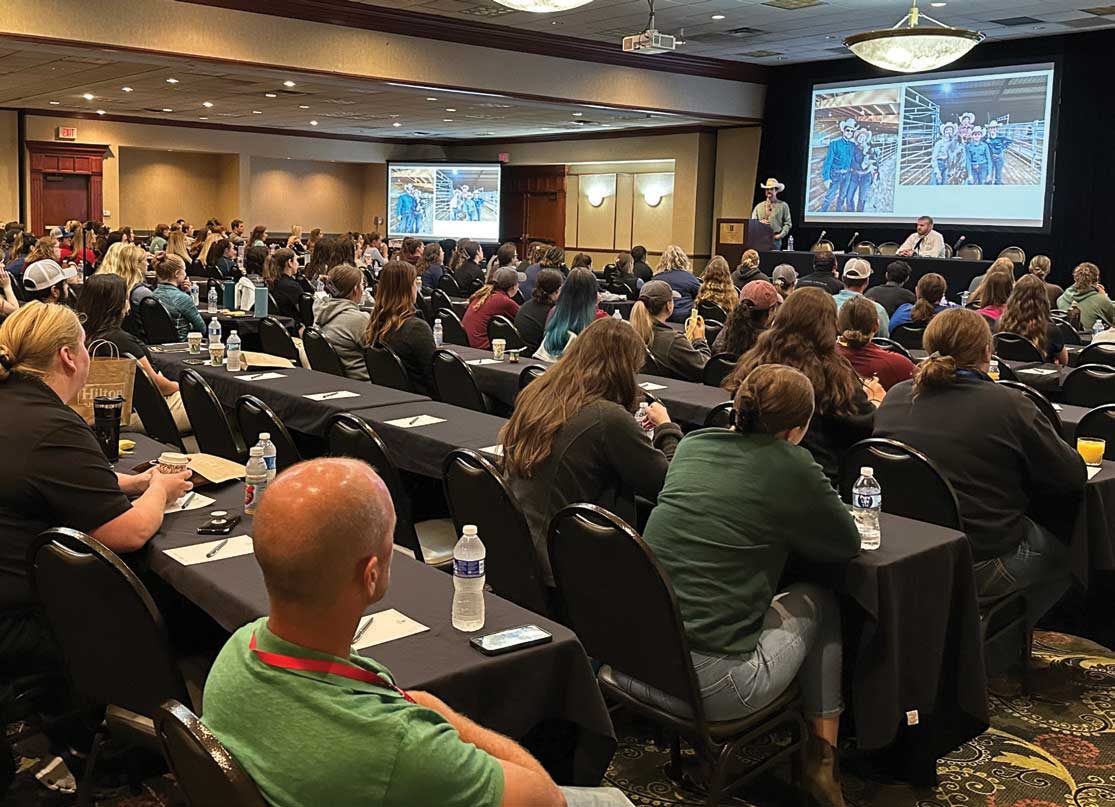
Editors note: This exciting seminar, to encourage careers in equine veterinary, is returning this year from Friday, August 30, 2024 to Sunday, September 01, 2024 in Lexington KY. In addition the seminar will also be presented again in 2025. The success of this program in 2023, as described below, is encouraging as the shortage of equine veterinarians is addressed.
by Rood & Riddle Equine Hospital
Opportunities in Equine Practice Seminar (OEPS), a professional forum created to encourage students to enter equine practice upon graduation, was held this past Labor Day in Lexington, Kentucky. After a ten-year hiatus, the event was reestablished to address the emerging crisis of the diminishing number of graduating veterinary students entering equine practice.
The seminar hosted third-year veterinary students with practitioners from around the country on hand to present their experiences in various disciplines, from general and mixed practice to board specialties, providing an introductory view of all aspects of equine practice, from the large hospital setting to the solo practitioner, at nominal or no expense to the student.
The event is the result of the cooperative efforts of equine practitioners from across North America, with additional financial support from industry sponsors and the American Association of Equine Practitioners (AAEP).
Attendees could engage in interactive discussions with equine practitioners and industry partners, tour equine hospitals, local horse farms, and Keeneland racetrack, as well as participate in hands-on workshops. OEPS 2023 was an unforgettable experience for those attending.
“We are thrilled to have such an amazing outpouring of support since the announcement of the return of OEPS, and due to the support of the equine practices and industry partners that joined us, we were able to sponsor over 260 students to attend from the US, Canadian, and island schools,” said Dr. Craig Lesser, the lead organizer of OEPS. “With dwindling numbers of students pursuing careers in equine practice, we aimed to inspire and equip students with knowledge about the vast opportunities within equine practice that make our careers uniquely gratifying.”
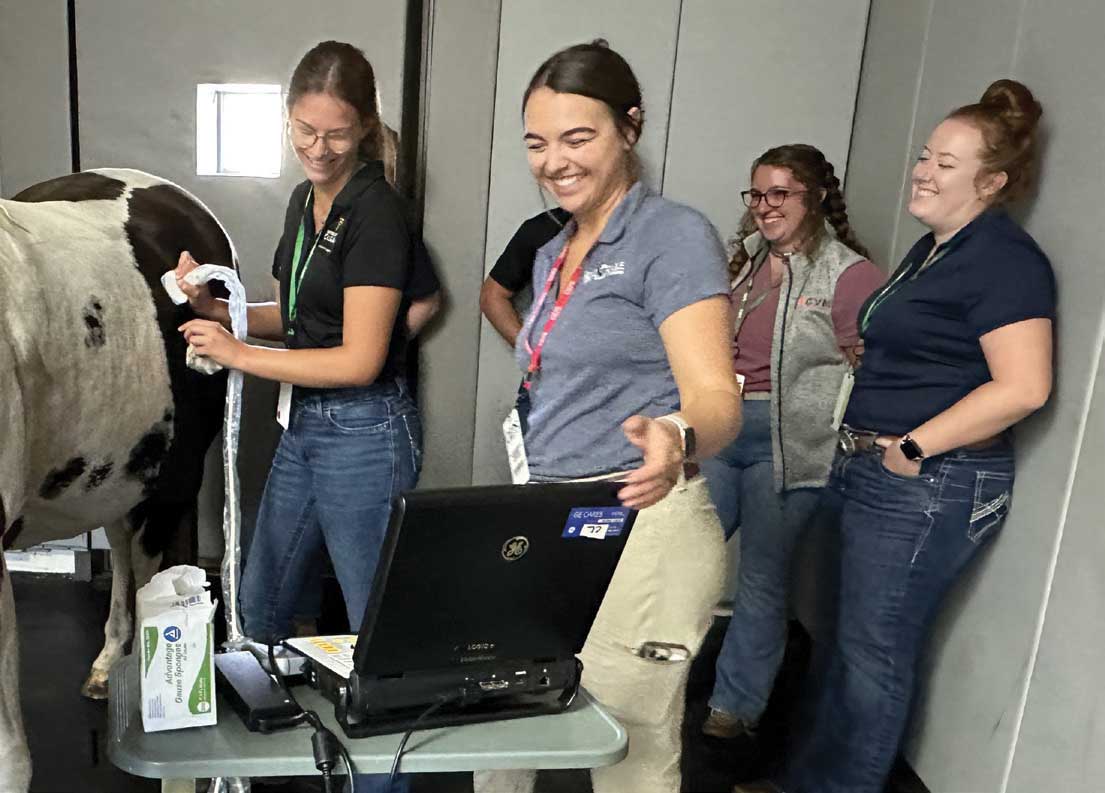
It was a rare opportunity for practices to positively influence hundreds of veterinary students interested in equine practice and cultivate relationships that will lead to future externs, interns, associates, and colleagues. Many attending practices have already pledged support in future years, as they saw how it was nice to see so many students actively interested in equine practice!
The survey of students after the event had some wonderful responses, including one student saying, “I thought it was an awesome weekend, I left feeling motivated for third year and getting closer to being with the equine vets in the field.” And another, “I loved the weekend; I really appreciated the opportunity to network with so many practices and meet other students who were interested in the same thing as me.”
One question asked on the survey was: “Based on your knowledge of equine practice before (then after) attending OEPS, how likely will you choose equine practice as your career?” Before the conference, eighty percent of respondents thought they were 80% confident that they would enter equine practice; however, after OEPS, that number rose to ninety-seven percent.
Looking forward, we plan to once again host OEPS on Labor Day weekend in 2024 for veterinary students entering their third year (2026 graduates). We must continue to encourage gifted students to pursue careers in equine practice and equip them with practical information for launching successful careers.
For more information on OEPS and ways to participate, please visit: oeps.com
This article by Rood & Riddle is published here with permission.
You can find this event and more on the EIE Calendar of Events. There are more informative articles in our section on Health & Education.
In this episode of StallSide, we are joined by Dr. Andrew van Eps, originally from Australia, who is a leading researcher at the University of Pennsylvania specializing in equine laminitis. Dr. van Eps shares his groundbreaking findings and the latest advancements in understanding, preventing, and treating this debilitating condition focusing on cooling therapy. Discover insights and gain valuable practical knowledge from the van Eps Laminitis and Endocrinology Laboratory at New Bolton Center, which is dedicated to unraveling the critical events driving laminitis under different circumstances to develop reliable means of prevention and treatment.
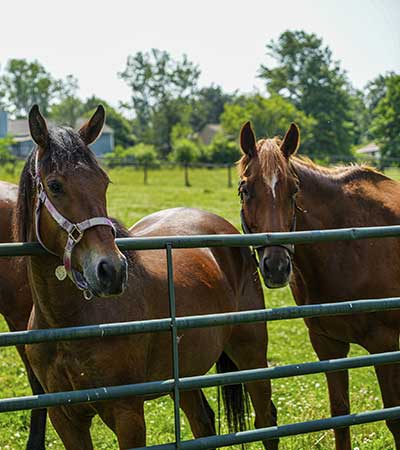
Horse Miscarriages Offer Clues to Causes of Early Human Pregnancy Loss - Cornell Veterinary Medicine
A study of horses – which share many important similarities with humans in their chromosomes and pregnancies – revealed that 42% of miscarriages and spontaneous abortions in the first two months of pregnancy were due to complications from an extra set of chromosomes, a condition called triploidy.
“Over that embryonic period [up to eight weeks from conception], triploidy had rarely been reported in mammals outside of women,” said Mandi de Mestre, the Dorothy Havemeyer McConville Professor of Equine Medicine at Baker Institute for Animal Health and in the Department of Biomedical Sciences at the College of Veterinary Medicine. “The study tells us that over the first six weeks of gestation, this will likely be the primary cause of pregnancy loss following natural conception.”
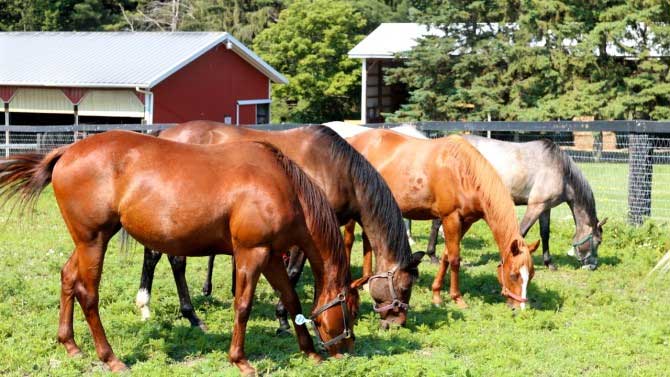
De Mestre is the corresponding author of Naturally Occurring Horse Model of Miscarriage Reveals Temporal Relationship Between Chromosomal Aberration Type and Point of Lethality published August 5, 2024 in the Proceedings of the National Academy of Sciences.
Human miscarriages occur in 10-20% of pregnancies and are commonly associated with chromosomal errors, but there have been no suitable animal models that truly duplicate the features of the condition. The new research findings will help veterinarians better understand the causes of pregnancy loss in horses, and identifies horses as an excellent model for studying human miscarriage.
“We were able to study the impact of chromosome errors across the entire pregnancy in the horse,” de Mestre said. “We found that triploidy is only associated with losses in early pregnancy.”
In the study, de Mestre’s laboratory at Cornell, and earlier at The Royal Veterinary College, London, received 256 fetus and placenta samples from veterinarians who treated horses with failed pregnancies over a period of 10 years. Using the samples, the researchers were able to investigate the prevalence of different types of chromosomal copy number errors associated with pregnancy loss. They found that chromosomal errors occurred in 57.9% of pregnancy losses up to day 55 of gestation, in 57.2% of losses between days 56 and 110 and in only 1.4% of losses between days 111 and the end of pregnancy. Aneuploidy (loss or gain of a single whole chromosome) was mainly associated with miscarriages in the first 10 weeks of pregnancy, while deletions or duplications of only part of a chromosome were found in miscarriages after 110 days. These findings turned out to be remarkably similar to those observed in a number of large studies in women, according to the paper.
Horses are a good model for studying human pregnancies because they have a similar gestation period – 11 months compared to nine months in women – and the embryo develops at a similar rate in the early stages. In addition, horse chromosomes have a very similar genetic content to human chromosomes, which makes them particularly relevant for the study of chromosome errors.
Reasons for miscarriage in women in very early pregnancy have been difficult to determine because most fetuses during this period are lost at home, leaving scientists without material – and data – to study. The study’s findings provide insight into the frequency of chromosome errors over the equivalent period of the first six weeks of human gestation.
Because of the value of horses and the emotional attachment their owners have to them, horses receive a high level of care, with routine tracking of pregnancies, which then provide extensive data for research.
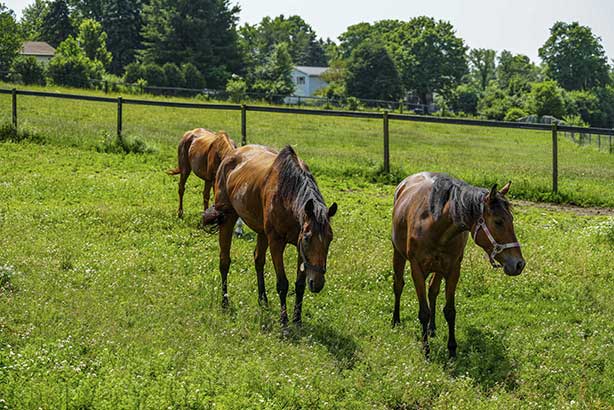
Photo courtesy of John Enright, Cornell College of Veterinary Medicine.
Other animal models, such as mice, are not comparable to human pregnancies. Mice have a gestation period of about three weeks, and natural pregnancy losses in mice are low.
In terms of equine health, the study provides new details about common chromosomal abnormalities that will likely change the clinical management of pregnancies. For example, if a clinician determines that a horse has a major chromosomal error, they may no longer choose to extend that pregnancy by administering hormones, a common practice in pregnant mares. The study will also point researchers toward the development of new diagnostic tests for chromosome abnormalities in horse fetuses and investigating molecular mechanisms that lead to these abnormalities.
“This research has provided a foundation for understanding the genetic causes of pregnancy loss in horses, often referred to as pregnancy loss of unknown cause,” said Shebl Salem, a postdoctoral researcher in de Mestre’s Equine Pregnancy Lab and a co-first author of the study.
Other co-first authors include Jessica Lawson of the Royal Veterinary College in London, United Kingdom; and Donald Miller, de Mestre lab manager.
The study was partly funded by the Horserace Betting Levy Board and Thoroughbred Breeders Association.
This article originally appeared on the Cornell University "Cornell Chronicle" and is published here with permission.
The are more informative educational articles in our section on Health & Education.
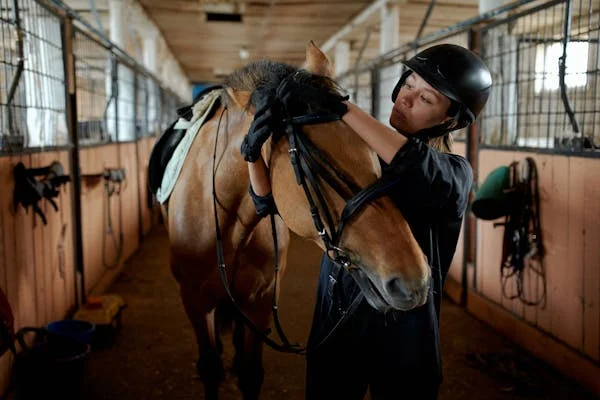
A horse can be a great companion. The nature of the association may stem from companionship, riding pleasure, or competing in contests. Assuring the health of your horse requires a dedicated journey of care and attention to detail. This includes giving them the right diet, getting regular check-ups and ensuring they have a suitable living environment and regular exercise schedule. Here is an ultimate guide for keeping your horse healthy.
1. Well-Balanced Diet
A well-balanced diet is key to health, regardless of your horse’s age, breed, and activity level. Having experienced different life stages during their lifetime, and some working harder physically than others, horses are subjected to various requirements.
- Young and growing horses need diets rich in protein and calcium for correct development.
- Older horses may need easily digestible feeds with supplements added to the diet to help maintain health.
- Performance horses need higher energy intake than those used for leisure.
Essential nutrients would include carbohydrates for energy, proteins for the development of muscles, and fats for supplying energy and maintaining good coat condition, with the addition of vitamins and minerals to maintain general health.
Supplementary feeds like salt blocks can complement the required electrolytes. Feeding schedules should stay as close as possible to a horse’s natural grazing habits by providing forage continually throughout the day while sectioning out grains and concentrates to avoid digestive complications and obesity. In some cases, a horse energy supplement may be beneficial for maintaining stamina during training or competition.
2. Hydration
Adequate water intake is essential for overall health, digestion, thermoregulation, and cellular functions in your horse. Access to fresh, clean water should always be available for horses. Horses consume five to 15 gallons of water within a 24-hour period, though this may increase in hot weather or after long rides.
Some signs of dehydration to look for in a horse include reduced skin elasticity, dry mucous membranes, and sunken eyes. It is also crucial not to over-hydrate, since this may cause an electrolyte imbalance. Keep replenishing your water source; heating may be recommendable during the cold months.
3. Veterinary Care and Routine Check-Ups
Regular check-ups allow problems to be identified at the initial stage and solved before it’s too late. Common problems among equines include colic, lameness, or breathing difficulties, which can be sorted out with a regular check by a veterinarian.
Preventative care is the key to good health. Vaccinations will prevent influenza, tetanus, and West Nile virus. Make sure to practice good dental care with regular check-ups and floating (filing teeth) to prevent dental problems that impact feeding and nutrition. Also schedule deworming to give no room for internal parasites to manifest.
4. Exercise and Physical Fitness
A well-rounded exercise program will be important to your horse’s physical and mental health. An appropriate amount of exercise means one that agrees with the size, breed, or age of your horse and their present level of fitness.
Regular sessions help maintain muscle and cardiovascular fitness and joint flexibility, adding to overall fitness. Other exercise benefits for horses include maintaining a healthy weight, improving digestion, and enhancing immune function. Additionally, regular activity strengthens the bond between horse and owner, fostering trust and cooperation. Whether riding, lunging, or turning out in a paddock, consistent physical activity leads to a fit and happy horse.
5. Proper Grooming and Hygiene
Daily grooming practices are necessary for a clean and healthy horse. Good grooming can eliminate dirt, debris, materials, and loose hair. Ensure that you inspect your horse daily for any injuries or skin conditions. Brushing, combing, and hoof picking complement each other as essential tools for grooming. Regular sessions also help bind you to your horse more effectively.
Attention should also be given to a clean and safe living environment. Stables should be dry, spacious, and free of hazards. To stop hazardous bacteria and parasites from growing, clean stables and equipment on a regular basis. A clean atmosphere improves your horse’s overall health by lowering the possibility of respiratory problems or other health problems.
6. Mental and Emotional Welfare
Horses are social animals that want to interact and stimulate their interests. For mental and emotional needs, ensure that your horse has some aspect of social interaction with other horses. Some enrichment activities include providing toys and creating stimulating environments to keep your horse engaged and mentally active.
It’s important to be able to recognize the signs of stress or behavioral problems. Any change in behavior or appetite could indicate that something is wrong. A calm and content horse can be maintained through consistent positive reinforcement, or with the help of an equine behaviorist.
Endnote
Following the best practices mentioned above is the best way to ensure your horse leads a healthy life. Consider what it eats and drinks, along with providing it with regular exercise and maintaining good hygiene. You also need to also prioritize veterinary services to keep their health in check.
You can find more informative articles in our section on Health & Education.
Problems involving the upper airway are a common cause of decreased athletic performance. The treadmill allows the clinician to examine the upper airway of an equine athlete while it is exercising at high speed. This type of dynamic evaluation is very useful in determining if the horse has an upper airway abnormality affecting performance. There are certain abnormalities of the upper airway that only become evident during exercise and will not be seen during a resting endoscopic evaluation. The examination is tailored to the type of work and the level of fitness for each horse, mimicking the speed and distance that the horse typically works. The endoscopic examination is recorded and evaluated in slow motion so that subtle abnormalities are identified.
Read more: Performing Treadmill Endoscopy at Rood & Riddle Equine Hospital (1:59)
- Rood & Riddle Stallside Podcast - Tall Fescue Woes: Insights on Endophyte Ingestion
- Rood & Riddle Stallside - Understanding Equine Biomechanics and Farriery with Dr Jenny Hagen
- Regenerative Medicine Therapies in Horses
- Educational Benefits of Equine-Assisted Learning Programs for Students
- Why is the Mule the Most Important Member of the Horse Family? Cornell Equine Seminar
- Five Tips for Keeping Your Horse Sound - Cornell Vet Equine Seminar Series
- Deworming the horse using a paste syringe with Teresa Kackert
- Stable Vices: Theirs or Ours? Abnormal Behavior in Horses
- FAQ: Lameness and Arthritis in Horses
- How to Safely Pony a Horse with Teresa Kackart (6:55) - Certified Horsemanship Association
- Equine Emergencies 101: What To Do When the Worst Happens from Cornell Equine Seminar
- Pre-purchase Headaches in the Sport Horse
- Sources of Magnesium - Including Whole Foods
- The Grayson-Jockey Club Research Foundation: Improving the Ability to Diagnose Spinal Cord Diseases
- Leadership Isn’t as Simple as it Sounds - an Excerpt from "How Two Minds Meet"
- CBD and other Cannabinoids – How they can benefit you, your horses, and your pets
- Foal Handling with Monty Roberts (2:00)
- Rood & Riddle Stallside Podcast: Sport Horse Medicine & Innovative Therapies with Dr Daniel Devis
- Melatonin: Can It Predict Your Horse’s Temperament?
- Summer Safety: Barn Fans & Automatic Horse Waterers








